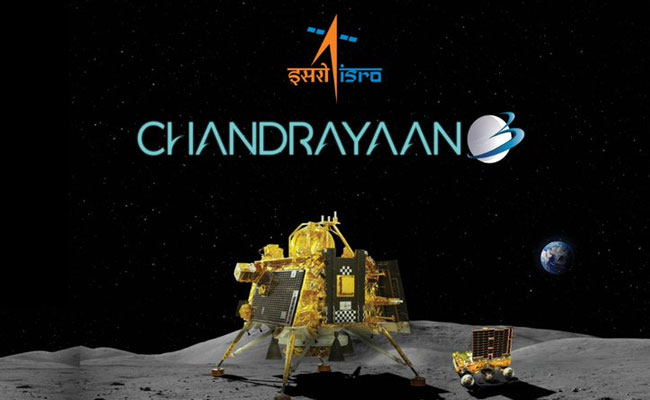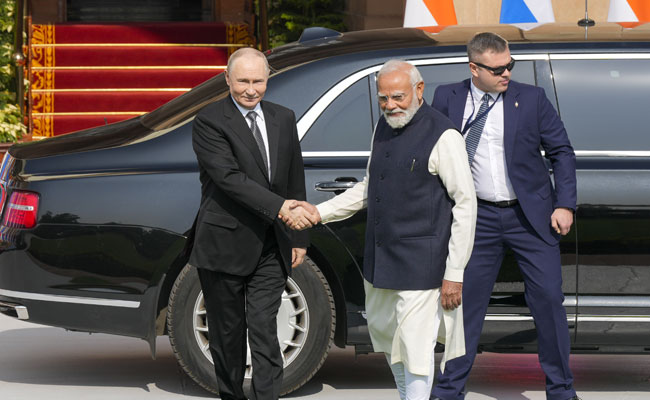Bengaluru (PTI): Three Lunar missions in 15 years! It seems the Moon truly beckons ISRO. And why not? Scientists found frozen water deposits in the darkest and coldest parts of the Moon's polar regions for the first time using data from the Chandrayaan-1 spacecraft in 2009.
Chandrayaan-1, India's first mission to the Moon, was launched on October 22, 2008 from Sriharikota spaceport in Andhra Pradesh.
The spacecraft, carrying 11 scientific instruments built in India, the USA, the UK, Germany, Sweden and Bulgaria, orbited around the Moon at a height of 100 km from the lunar surface for chemical, mineralogical and photo-geologic mapping of the Moon.
After the successful completion of all the major mission objectives, the orbit was raised to 200 km in May 2009. The satellite made more than 3,400 orbits around the Moon.
The orbiter mission, which had a mission life of two years, was, however, prematurely aborted after communication with the spacecraft was lost on August 29, 2009.
"Chandrayaan-1 achieved 95 per cent of its objectives," said the then ISRO Chairman G Madhavan Nair.
And a decade later, Chandrayaan-2, comprising an orbiter, lander and rover, was successfully launched on July 22, 2019.
The objectives of the country's second mission to the Moon were scientific studies by payloads onboard the orbiter, and technology demonstration of soft landing and roving on the lunar surface.
Most of the components of technology demonstration, including the launch, orbital critical manoeuvres, lander separation, de-boost and rough braking phase were successfully accomplished.
However, the lander with a rover in its belly crash-landed on the lunar surface in the final lap, failing in its objective to touch down gently.
"We narrowly missed it (soft landing on the Moon in Chandrayaan-2 mission) in the last two km (above the lunar surface)," Nair had told PTI on Monday.
However, all the eight scientific instruments of the orbiter, which had separated from the lander and rover, are performing as per design and providing valuable scientific data.
Due to the precise launch and orbital manoeuvres, the mission life of the orbiter increased to seven years, according to ISRO.
In fact, ISRO on Monday said that two-way communication between the Chandrayaan-2 orbiter and the Chandrayaan-3 lunar module has been established.
Moreover, the discovery of water on the Moon in 2009 was a hugely significant event, following which scientists, using data from an instrument which flew aboard India's Chandrayaan-1 spacecraft, created the first map of water trapped in the uppermost layer of the Moon's soil. It would prove useful to future lunar explorers, ISRO officials said.
The study, published in the journal Science Advances, builds on the initial discovery in 2009 of water and a related ion hydroxyl, which consists of one atom each of hydrogen and oxygen in lunar soil.
Scientists from Brown University in the US used a new calibration of data taken from NASA's Moon Mineralogy Mapper, which flew aboard the Chandrayaan-1 spacecraft in 2008, to quantify how much water is present on a global scale.
Using data collected by India's Chandrayaan-1 mission, NASA has detected magmatic water locked under the surface of the Moon.
The findings represent the first remote detection of this form of water that originates from deep within the Moon's interior, NASA researchers had said.
Let the Truth be known. If you read VB and like VB, please be a VB Supporter and Help us deliver the Truth to one and all.
Mumbai (PTI): Aviation watchdog DGCA on Friday eased the flight duty norms by allowing substitution of leaves with a weekly rest period amid massive operational disruptions at IndiGo, according to sources.
As per the revised Flight Duty Time Limitations (FDTL) norms, "no leave shall be substituted for weekly rest", which means that weekly rest period and leaves are to be treated separately. The clause was part of efforts to address fatigue issues among the pilots.
Citing IndiGo flight disruptions, sources told PTI that the Directorate General of Civil Aviation (DGCA) has decided to withdraw the provision 'no leave shall be substituted for weekly rest' from the FDTL norms.
ALSO READ: 49 Indigo flights likely to be cancelled from Hyderabad
"In view of the ongoing operational disruptions and representations received from various airlines regarding the need to ensure continuity and stability of operations, it has been considered necessary to review the said provision," DGCA said in a communication dated December 5.
The gaps in planning ahead of the implementation of the revised FDTL, the second phase of which came into force from November 1, have resulted in crew shortage at IndiGo and is one of the key reasons for the current disruptions.
#BREAKING: #DGCA relaxes a clause which debarred airlines to club leaves with weekly rest to mitigate #IndiGo crisis
— Economic Times (@EconomicTimes) December 5, 2025
🔴 Catch the day's latest news here ➠ https://t.co/8eVBGnsJUA 🗞️ pic.twitter.com/KUWc8R2Kso





